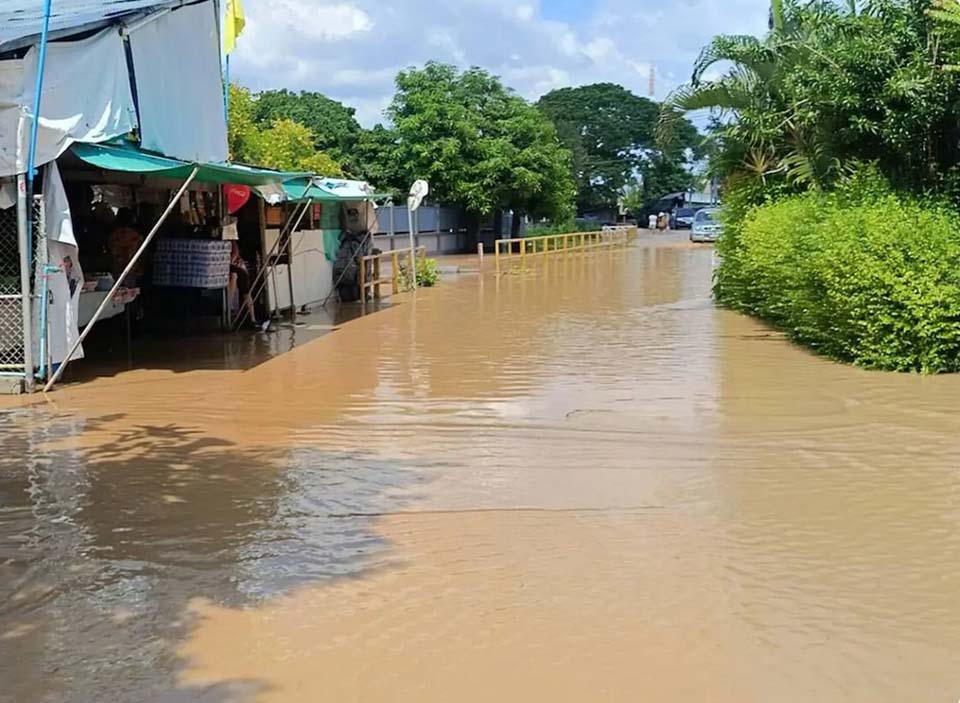
BANGKOK, Thailand – Deputy Prime Minister Prasert Chantararuangthong has urged Thai authorities to incorporate advanced technology, including artificial intelligence, to better assess and manage the country’s water resources as part of long-term flood and drought mitigation efforts. Chairing the first 2024 meeting of the National Water Resources Committee (NWRC) on October 11, Prasert outlined plans for more accurate data collection and immediate action to address ongoing flood risks while preparing for the upcoming dry season.
The meeting focused on the current flood situation, with updates from Prasert and senior officials from the Ministry of Agriculture, the Ministry of Interior, and the Office of National Water Resources (ONWR). Following recent visits to Chiang Rai, Chiang Mai, and Lampang, Prasert and Prime Minister Paetongtarn Shinawatra observed ongoing flood and landslide situations. Concerned about the impact on local communities, the prime minister called for intensified water management efforts and close monitoring to ensure effective responses to the challenges.
During the meeting, Prasert assigned the NWRC several tasks, starting with addressing immediate flood problems. While some areas have shown improvement, the committee stressed the importance of increasing the frequency of water situation assessments and collaborating with relevant agencies to minimize disruptions and avoid public panic. With the dry season approaching, the committee also discussed concerns over potential drought, particularly regarding water reserves. Lam Takhong Dam in Nakhon Ratchasima, for example, is currently at just 30% capacity, raising alarms about water sufficiency during the dry months.
In addition to immediate concerns, the deputy prime minister stressed the need for long-term flood prevention strategies, especially in northern Thailand, and called for a review of flood prevention plans to prioritize critical projects. These measures are intended to ensure efficient budget use and address the root causes of water management challenges nationwide.
The integration of AI technology into water management was another key issue discussed. The committee backed a proposal to apply AI in managing national water data, which could provide more informed decision-making processes for resource management and increase the overall efficiency of water distribution and flood prevention.
Several critical decisions were made during the meeting, including the establishment of a subcommittee to assess the water situation in 2024. Chaired by the Secretary-General of the ONWR, the subcommittee will evaluate weather patterns, rainfall, and water levels to provide real-time data to the NWRC and related units. The subcommittee will also collaborate with other agencies to learn from recent storm events and incorporate these insights into future plans.
The NWRC also approved a series of draft measures proposed by the ONWR to tackle the dry season of 2024/2025, which is expected to begin on November 1. These measures focus on three primary areas: water resources, water demand, and overall water management. Agencies have been instructed to expedite action plans to implement these measures, with monthly progress reports to be submitted until the end of the dry season.
The meeting also discussed the ongoing risk of flooding in vulnerable areas, especially those with significant economic importance. Continuous monitoring of water levels and timely interventions are deemed essential to prevent further damage as flood risks persist across parts of the country.
Thailand remains on high alert as the country faces the dual threats of floods in the north and potential droughts in the upcoming dry season. The government is pushing for innovative approaches, including the use of advanced technologies, to ensure the nation is better equipped to manage its water resources both now and in the future. (NNT)








